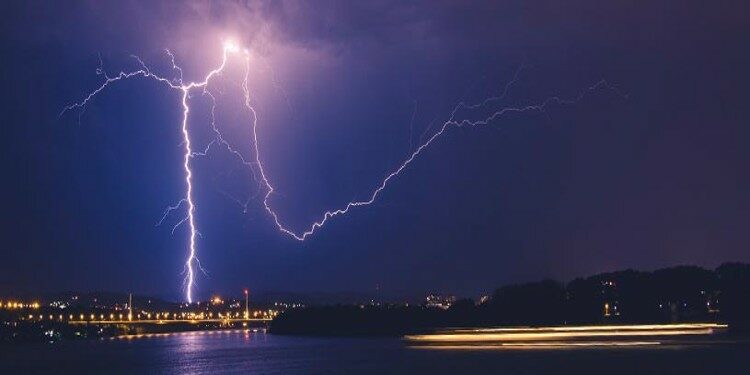In news– Brazilian researchers recently succeeded in taking pictures of positive upward discharges of electricity from lightning conductor rods, travelling to connect with the negative discharge from lightning in the clouds.
What is lightning?
- Lightning is a rapid and massive electrical discharge that takes place between storm clouds and the ground, or within the clouds themselves.
- Scientists believe that for lightning to occur, positive and negative charges must separate within a cloud. This happens when the water droplets in the bottom part of the cloud are moved upwards, where the much colder atmosphere freezes them into small ice crystals.
- There are three common types of lightning: cloud to ground, cloud to cloud and cloud to air.
Lightning rods-
- Benjamin Franklin invented lightning rods in the 18th century, and the devices have been protecting buildings and people from the destructive forces of lightning ever since. But the details of how lightning rods function are still the subject of scientific research.
- Although modern lightning protection systems involve extra equipment that makes them more efficient, the lightning rod itself is quite simple: a copper or aluminum rod set above the highest point of a building, with wires connected to the ground.
- When lightning strikes a building it will preferably pass through the rod — the path of least resistance — and then through the wires into the ground, protecting the building and its contents from the extremely high currents and voltages produced by lightning.
About upward lightning-
- The upward lightning primarily occurs when there is a nearby positive cloud-to-ground flash.
- The electric field change caused by the preceding flash causes an upward positive leader to initiate from a tall object such as a building, tower or wind turbine.
- The shape of the tall object and the resulting enhancement in the electrical field makes it possible for an upward leader to form following a nearby flash.
- Upward triggered lightning usually occurs in response to a natural lightning flash, but on rare occasions can be “self-triggered”—usually in winter storms with strong winds.
Source: The Indian Express
















